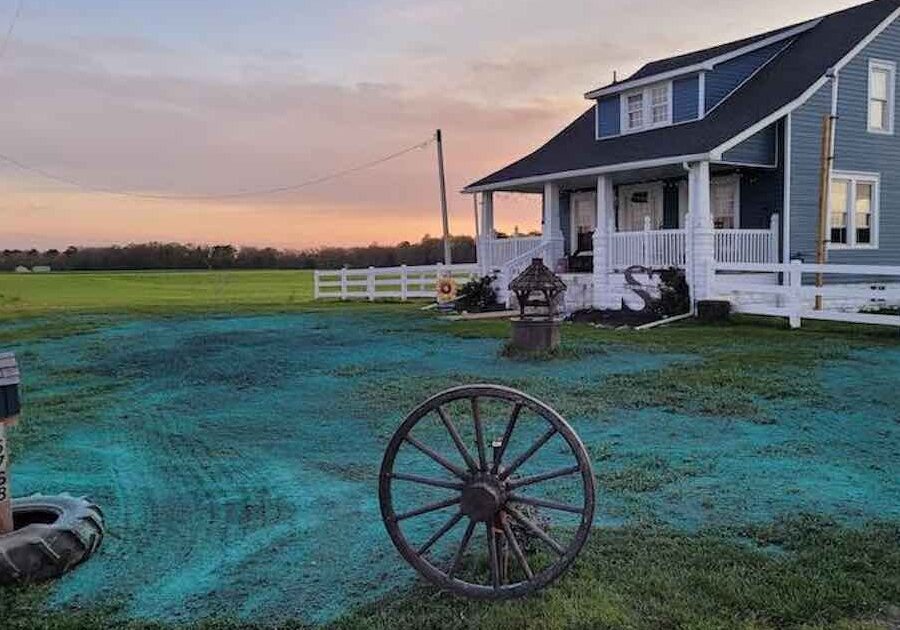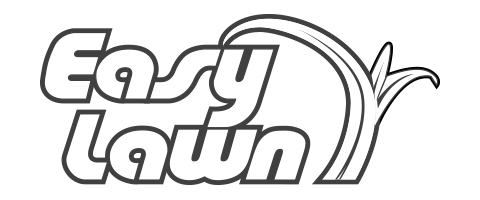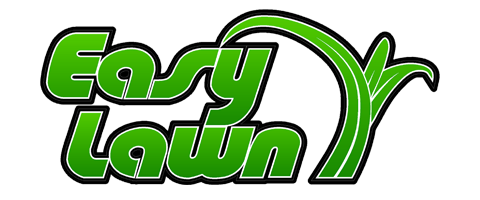How to Start a Hydroseeding Business

Share this article!
Hydroseeding offers an array of benefits for landscape businesses and their clients as a cost-effective alternative to sod. Hydroseeding services are becoming more popular, especially in the residential sector, because many small landscapers want to offer hydroseeding services for the efficiency and reliable results they yield, but often struggle to justify the initial investment in the machinery.
Why Start a Hydroseeding Business?
Hydroseeding equipment can be a profitable addition to a landscaper’s toolkit, and can expand the offerings they have available for residential and commercial landscaping, lawn maintenance, and more. Often, residential and commercial hydroseeding is a highly appealing solution for projects, and word of mouth spreads quickly, creating many more jobs.
Hydroseeding can be a quick and effective way to add new grass or other types of plants to a large area, which means landscapers have more ways to enhance landscape projects, and more services to offer existing clients, like mulching or erosion control, which can also attract new clients. All this can also be accomplished while keeping overhead relatively low.
In many cases, hydroseeding projects can pay for the machinery (whether purchased or rented) in a few jobs, especially if the projects are larger residential landscaping opportunities.
How Profitable is a Hydroseeding Business?
In order to determine how profitable starting a hydroseeding business may be, it’s important to understand the operating costs, as well as the material and personnel resources involved in your expected hydroseeding projects.
For example, if you’re planning to take on mostly residential hydroseeding jobs, with an average yard size of about 1,600 square feet, you’ll need to consider the costs of the seeds, fertilizers, and tackifiers for the slurry, as well as the team of people you’ll have running the project. It’s also important to note that as you get more experienced at pricing out and completing hydroseeding jobs, the process will become more streamlined and you can expect to increase returns on investment as you cut time out of the process.
Balance those costs against your machinery costs – will you be purchasing a new or used hydroseeder? Plan to price out machinery costs and then calculate out how many jobs you’d need to take on until the hydroseeder is paid off. Then you can see exactly when you’ll start turning profit from your hydroseeding jobs.
Similarly, you can plan on renting a hydroseeder. Especially if you’re testing out offering hydroseeding services, this can be a great way to see how your team handles the process, how you access materials, price jobs, and more. Check out rental prices in your area before deciding, and determine how much you’ll need to make from each job to make a rental worth your time.
How Much Does it Cost to Start a Hydroseeding Business?
The first thing you’ll need to price out when determining how much it costs to start a hydroseeding business is the hydroseeder itself, as this is the largest investment. On average, around $5,000 can buy a mid-sized hydroseeder that can handle most mid-to-large sized residential landscaping projects.
This price will vary significantly, however, based on what’s available in your area, as well as what kind of hydroseeder you need for the types of jobs you’ll be taking on. Small hydroseeders can often handle much larger jobs, it just means you’ll spend more time, and potentially need a few more helping hands, to get the job done. This may be a welcome tradeoff if you’re just starting out in the hydroseeding world and testing out the concept for your business.
Purchasing a used hydroseeder can also cut your costs, and renting equipment can allow you to test out different versions of hydroseeders to get a feel for what will realistically work best for you in the field. By most estimates, hydroseeding between 5 and 10 lawns can recoup the cost of the hydroseeder investment, so if you expect to have more business than that, purchasing may make the most sense.
What Type of Hydroseeder Will I Need?
To determine what type of hydroseeder you’ll need, you need to answer two key questions:
- What materials will I be hydroseeding?
- Are you primarily seeding with paper mulches? If so, you’ll likely be able to get by with a smaller, jet agitation hydroseeder.
- Seeding with heavier mulches like BFMs? You’ll need a mechanical agitation hydroseeder with a paddle or mechanical agitator to handle the heavier slurry.
- How large are your hydroseeding projects likely to be?
- Since most residential lawns average around 1,600 square feet, you can balance that against how many square feet a hydroseeder can handle. Entry level hydroseeders like our L10 Hydroseeder can cover roughly 1,300 square feet and should take about an hour, depending on the size of your team. For larger jobs, our 900 gallon hydroseeder makes an excellent choice, with a turret capable of spraying distances up to 145 feet.
How Much Hydroseed Do I Need?
The amount of hydroseed you need to complete a project depends on two factors – the type of seeds you’ll be planting, and the square footage of the area. For example, if you’re seeding a lawn with a variety like fescue and want a thick, lush lawn, the recommended volume is 3-6 lbs per 1,000 square feet.
Different varieties of seeds require more or less seed to cover the same square footage. Ryegrasses, for example, generally need a bit more seed coverage – between 4 and 7 lbs per 1,000 square feet.
It’s important to read the recommendation for the particular variety of seed you’ll use, so you know how much to use as a baseline. Then, consider the soil content of the area you’re looking to hydroseed. If it’s had trouble growing grasses or other plants in the past, you may want to adjust the amount of seed you use, or even get a soil test before you begin to make sure you don’t need to use a specialized fertilizer or make other ground preparation measures to ensure your hydroseeded lawn’s success.
How Much Should I Charge for Hydroseeding?
When pricing out hydroseeding projects, consider what kind of seed you’ll use, and what type of fertilizers and other additives necessary, so you can estimate your materials cost. Steeply sloped areas, for example, will need tackifiers so you’ll need to make sure you have them ready for the slurry.
Once you have estimated your materials cost, visit the site in person to determine how long the project will take to seed, and how many people you’ll need to complete it. From there you can estimate your labor costs.
On average, hydroseeding costs run between $3,000 and $5,000 per acre. A flat, relatively easy to reach lawn site that needs little to no ground prep, and will be seeded with a basic grass seed should run on the lower end of the cost spectrum. Projects that require more ground prep, are steeper or harder to reach, or need specialized seeds and fertilizers will, by contrast, represent the higher price point of hydroseeding jobs.
How Do I Find Hydroseeding Customers?
Depending on your business plan and model, you’ll likely want to start marketing your hydroseeding business through area landscape companies. Do your research to find landscapers that don’t yet offer hydroseeding services, and make a plan to approach them with a fair deal for providing the services. Let them know you can help them expand their business and offerings by including hydroseeding among them. Many smaller landscapers can’t justify the investment of a hydroseeder, but will have clients or contacts who would benefit from being able to offer hydroseeding.
In addition, be sure to do your competitive research. Find out what companies do offer hydroseeding, where they generally take jobs, and how much they’re charging for those jobs. This will help you understand the market demand, and help you make a plan to attract potential customers that aren’t already in a saturated market.
Conclusion
Starting any business, and especially a hydroseeding business, can be a daunting task, but when you understand the environment, and have your financial ducks in a row, you can confidently take steps in the right direction. For more ideas on how to start a hydroseeding business and additional information for all things hydroseeding, visit our resource library.

